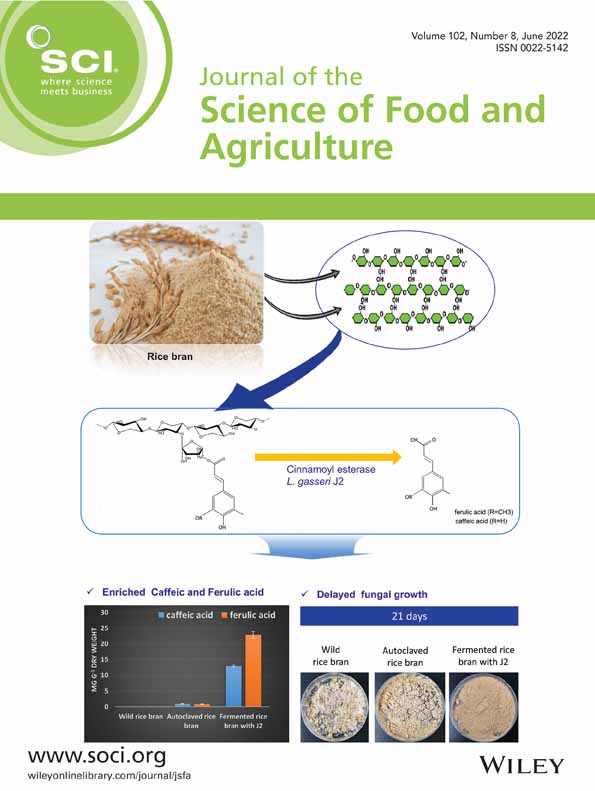Ver ítem
- xmlui.general.dspace_homeCentros Regionales y EEAsCentro Regional Buenos Aires NorteEEA PergaminoArtículos científicosxmlui.ArtifactBrowser.ItemViewer.trail
- Inicio
- Centros Regionales y EEAs
- Centro Regional Buenos Aires Norte
- EEA Pergamino
- Artículos científicos
- Ver ítem
Environment affects starch composition and kernel hardness in temperate maize
Resumen
BACKGROUND: Protein percentage and kernel weight affect the endosperm hardness of maize grains. However, changes in starch composition could also modify kernel hardness, which is often predicted through milling ratio. The objective of this work was to evaluate the relationship between changes in starch composition and endosperm hardness, and to assess the effects of protein content and kernel weight on that relationship. For this, we used information
[ver mas...]
BACKGROUND: Protein percentage and kernel weight affect the endosperm hardness of maize grains. However, changes in starch composition could also modify kernel hardness, which is often predicted through milling ratio. The objective of this work was to evaluate the relationship between changes in starch composition and endosperm hardness, and to assess the effects of protein content and kernel weight on that relationship. For this, we used information obtained from three temperate hybrids in multi-environmental experiments, as well as experiments conducted under controlled conditions designed to modify starch composition. Milling ratio was determined as maize kernel hardness predictor in both experiments and it was correlated with grain weight and grain composition. RESULTS: In both experiments, milling ratio presented a significant Spearman correlation coefficient with amylose/starch ratio. Milling ratio was significantly related to the amylose/starch ratio using a simple fit with datasets from different experiments and hybrids. Increases in amylose/starch ratio were associated with increases in milling ratio. CONCLUSION: Starch composition was related to milling ratio variations among hybrids of different aptitude for dry milling through different environments, regardless of protein content. Thus, increases in the amylose/starch ratio were related to increases in the milling ratio.
[Cerrar]

Autor
Martínez, Roberto Dionisio;
Cirilo, Alfredo Gabriel;
Cerrudo, Aníbal Alejandro;
Andrade, Fernando Hector;
Izquierdo, Natalia Gabriela;
Fuente
Journal of the Science of Food and Agriculture (First published: 30 March 2022)
Fecha
2022-03
Editorial
Wiley
ISSN
1097-0010 (online)
Formato
pdf
Tipo de documento
artículo
Palabras Claves
Derechos de acceso
Restringido
 Excepto donde se diga explicitamente, este item se publica bajo la siguiente descripción: Creative Commons Attribution-NonCommercial-ShareAlike 2.5 Unported (CC BY-NC-SA 2.5)
Excepto donde se diga explicitamente, este item se publica bajo la siguiente descripción: Creative Commons Attribution-NonCommercial-ShareAlike 2.5 Unported (CC BY-NC-SA 2.5)

